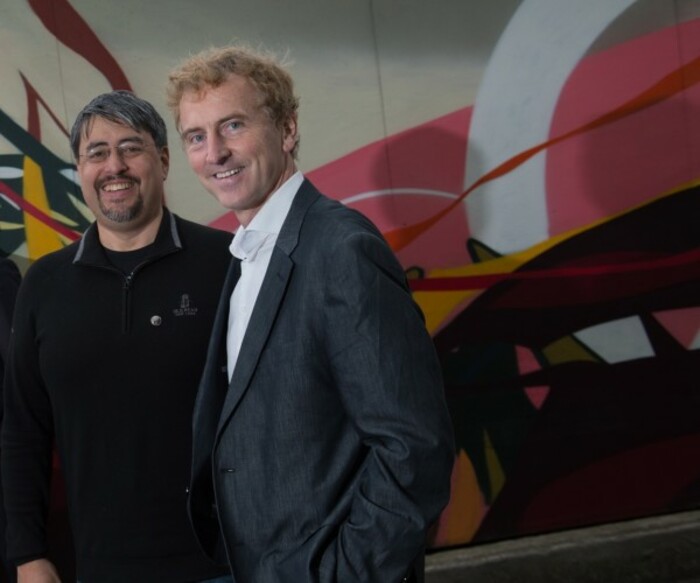Hedging a bet or starving startups of cash? The ins and outs of 'tranched' investment
One Irish company folded suddenly this year after it failed to meet its targets.
BACKING STARTUPS IS a risky business – leading investors to inevitably look for ways to hedge their bets on young firms.
One tactic for mitigating against the risk of writing off millions in venture capital on a failed enterprise is to release funding in tranches, rather than unloading the cash in one go.
But some argue tying investment too closely to metrics and milestones can leave an otherwise-promising startup starved of capital and on its way to an early demise.
Irish payments startup Plynk championed its €25 million round last year but, according to later reports, the fintech firm ran into trouble when it came to accessing all the money, which had been divided into tranches.
Plynk reportedly missed one of the targets and found itself stuck for cash. Not long later, the company was headed for liquidation.
Bill Liao, a general partner at investment firm SOSV, told Fora that this is a worst-case scenario for startup backers.
While supplying funding in tranches removes some of the risk for investors, a startup missing its targets and being forced to fold is in no one’s interest, he said.
SOSV, which was founded by former Dragons’ Den dragon Sean O’Sullivan and has a presence in Cork, implements milestone-based deals with many of its portfolio startups and entrepreneurs that come into its accelerator programme.
Liao said that investors have to be wary of setting the right goals as ill-thought-out metrics can lead startups down a bad path.
“If you don’t have the right trigger for releasing the money, then you can skew the behaviour of the company in the wrong way,” he said.
Targets may also need to be tweaked on the fly based on new evidence, especially in the case of early stage companies, for which pivoting from one strategy to another is common.
Liao added that investors have a tendency to “set and forget”, which can put a portfolio company under a lot of stress.
 Bill Liao (left) & Sean O'Sullivan
Bill Liao (left) & Sean O'Sullivan
Milestones – which should be set to indicate the startup is gaining meaningful traction – vary from deal to deal, but they may include revenue or profitability targets, user number targets, or the securing of a patent.
Planning
Dublin’s Impedans develops plasma diagnostic equipment for manufacturing processes. It is an SOSV portfolio startup that has experienced milestone-based funding and learned some crucial lessons in the process.
Chief executive Mike Hopkins told Fora that the startup received €500,000 from the firm with a further possible €1.5 million contingent on a revenue goal over 12 to 18 months.
“The revenue target was in the region of €4 million. It’s very significant revenue for a startup,” Hopkins said.
“We didn’t (meet the target). The company grew slower than we thought it might, but it grew at a pace that we could fund it ourselves,” he said.
“You have a plan of what is going to happen, but you never know for sure exactly how quickly the market is going to develop.”
Impedans never received that further €1.5 million, but Hopkins added that the company was secure because it didn’t hinge its future on getting the money. He said the company made the best use it could of the initial €500,000 tranche and is now profitable.
However, despite Impedans’ positive outcome, he warns startups against agreeing to very specific milestones to secure funding that they need now, leaving them potentially exposed if they come up short.

“That’s a very negative situation to find yourself in. Where I think it does work is where the company says, ‘Look, if everything goes to plan, I need half a million’,” he said.
“It allows you to get enough investment to get to where you need to get to, which was the situation in our case, but it gives you the option to take a lot more money if things pan out well.”
Short term goals
However not all VC firms embrace tranched funding as a way to reduce investment risk, with some arguing that it may force startups to focus on short-term goals instead of long-term success.
Dublin-based venture capital Frontline Ventures generally avoids tranching, although investment executive Finn Murphy said the VC outfit has used the approach in the past under “unique circumstances where it makes sense”.
He used the example of a payments startup getting regulatory approval before receiving any more funds but added that this is the exception to the rule.
“We think that startups need flexibility in their early stages,” he added.
“When funding is contingent on milestones, the company tends to work towards those milestones rather than doing what’s best for the business – and in early stage, what’s best for the business can often change rapidly.”
Murphy also disagrees that tranches provide an added shield for investors from risk.
“Generally as an investor you want to de-risk your investments by giving your portfolio as much flexibility and resources to do what needs to be done to succeed within their market,” he said.
“Tranching reduces flexibility and constrains available capital so while it might protect you from the downside I believe it also can hamper your potential upside.”
However Liao believes that tranching funds helps teach entrepreneurs to manage their cash flow, while short-term goals can still be used to fit into a bigger-picture agenda.
“If you drop (the cash) on them all at once, there is a bit of a tendency towards waste in that early stage. By not getting all the cash at once, you often get better cash management, and that’s also beneficial to everyone,” he said.
While staggered funding is suited to the earliest-stage investments, Liao added that it shouldn’t really be on the table for series A and B. At this point, the company should be well versed in managing money and focused on growth.
“Investing in startups is an enormously risky business, so you do whatever you can to (allay) the risk and we’re pretty good at that, especially with our accelerator programmes,” he said.
“We get to know the companies well before we commit a lot of capital to them and that’s proved to be a great model for us.”







